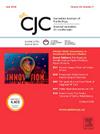中度低体温循环暂停期间体温升高是否会增加急性 DeBakey I 主动脉夹层患者截瘫的风险?
IF 5.8
2区 医学
Q1 CARDIAC & CARDIOVASCULAR SYSTEMS
引用次数: 0
摘要
背景:目的:评估急性DeBakey I型主动脉夹层(DeBakey I AAD)患者在循环停止期间高-中度(24.1-28.0°C)和低-中度(20.1-24.0°C)全身低体温(MHCA)的安全性,尤其是脊髓保护:2009年至2020年间,在一家三级医院接受冰冻象鼻躯干和全弓置换手术的1759名德巴克伊I型主动脉夹层患者被分为术前灌注不良(内脏、脊髓或下肢)和非灌注不良亚组。采用倾向得分匹配法平衡基线差异。对接受高MHCA(鼻咽温度24.1-28.0°C)和低MHCA(20.1-24.0°C)治疗的患者的预后进行比较:在非热灌注亚组(n=1389)的469对匹配患者中,高MHCA组的院内死亡率和急性肾损伤发生率低于低MHCA组(院内死亡率,7.0%对10.2%,P=0.01;急性肾损伤,57.1%对64.6%,P=0.01):高MHCA是主动脉弓手术中常用的温度管理策略,其安全性在大多数DeBakey I AAD患者中都得到了认可。然而,在术前远端器官灌注不良的患者中,低MHCA可能更合适,因为高MHCA会增加术后截瘫的风险。本文章由计算机程序翻译,如有差异,请以英文原文为准。

Does Higher Temperature During Moderate Hypothermic Circulatory Arrest Increase the Risk of Paraplegia in Acute DeBakey I Aortic Dissection Patients?
Background
In this study, we sought to assess the safety of high-moderate (24.1-28.0°C) and low-moderate (20.1-24.0°C) systemic hypothermia during circulatory arrest (MHCA) in patients with acute DeBakey I aortic dissection (DeBakey I AAD), particularly concerning spinal cord protection.
Methods
From 2009 to 2020, 1759 patients with DeBakey I AAD who underwent frozen elephant trunk and total arch replacement surgery at a tertiary centre were divided into preoperative malperfusion (viscera, spinal cord, or lower extremities) and nonmalperfusion subgroups. The baseline differences were balanced with the use of propensity score matching. Prognoses were compared between those who were subjected to high-MHCA (nasopharyngeal temperature 24.1-28.0°C) and low-MHCA (nasopharyngeal temperature 20.1-24.0°C).
Results
In the nonmalperfusion subgroup (n = 1389), 469 pairs of matched patients showed lower in-hospital mortality and incidence of acute kidney injury in the high-MHCA group than in the low-MHCA group: in-hospital mortality 7.0% vs 10.2% (P = 0.01); acute kidney injury, 57.1% vs 64.6% (P < 0.01). The duration of mechanical ventilation was shorter in the high-MHCA group than that in the low-MHCA group (P = 0.03). No significant difference in the incidence of paraplegia was observed between the 2 groups. In the malperfusion subgroup (n = 370), 112 pairs of matched patients showed a higher incidence of paraplegia in the high-MHCA group than in the low-MHCA group (15.9% vs 6.5%; P = 0.04).
Conclusions
The safety of high-MHCA, a commonly used temperature management strategy during aortic arch surgery, was recognised in most patients with DeBakey I AAD. However, among patients with preoperative distal organ malperfusion, low-MHCA may be more appropriate owing to an increased risk of postoperative paraplegia associated with high-MHCA.
求助全文
通过发布文献求助,成功后即可免费获取论文全文。
去求助
来源期刊

Canadian Journal of Cardiology
医学-心血管系统
CiteScore
9.20
自引率
8.10%
发文量
546
审稿时长
32 days
期刊介绍:
The Canadian Journal of Cardiology (CJC) is the official journal of the Canadian Cardiovascular Society (CCS). The CJC is a vehicle for the international dissemination of new knowledge in cardiology and cardiovascular science, particularly serving as the major venue for Canadian cardiovascular medicine.
 求助内容:
求助内容: 应助结果提醒方式:
应助结果提醒方式:


